table of contents:
Accumulated dust and thread residue eventually slow down your sewing machine. To maintain its performance, regular sewing machine cleaning is essential. Have you also dreamed of effectively cleaning your sewing machine to avoid uneven stitches or costly breakdowns?
Discover simple yet powerful techniques, tested by expert seamstresses, to give your sewing machine personalized care. From the soft brush to the secrets of lubrication, we reveal the steps that transform maintenance into a pleasurable routine, without the risk of breaking a needle or straining the mechanisms.
Why is regular cleaning of your sewing machine essential?
Think of your sewing machine as a partnership: a delicate mechanism that requires constant care to reach its full potential. Thread residue, dust, and lint accumulate in the inner workings, hampering the precision of your creations . Debris in the bobbin system disrupts the needle movement, creating uneven tension.
The consequences of poor maintenance are brutal. An uneven stitch turns a project into frustration. Metallic noises, broken threads, or broken needles indicate a stressed mechanism. Eventually, these signals herald costly repairs or even complete machine replacement .
Do you recognize these signs? Is your machine skipping stitches? Is the fabric moving erratically? Are there unusual noises or oil stains? These are all signs that your sewing machine needs cleaning. A jammed filament, a jam in the bobbin case, or a dirty area under the needle plate are often the culprits.
But rest assured. Maintenance is a routine accessible to everyone. By regularly cleaning your sewing machine, you prevent premature wear and restore your equipment's fluidity. In a few simple steps, you can eliminate the invisible obstacles that shorten the life of your machine. This article shows you how to take action before damage sets in, because prevention is better than repair .
Regular cleaning is an investment in the longevity of your tool . It also guarantees professional results, without compromising the quality of your work. By entrusting your sewing machine cleaning and overall maintenance to a professional, you ensure optimal performance, project after project.
For a consistently high-performance sewing machine, choose Verotex expertise. Our maintenance and repair service will help you out in no time.

Prepare your machine and gather the necessary materials
Poorly planned cleaning can lead to costly breakdowns. A stuck thread or embedded dust can cause your machine to jam while it's sewing. Thorough preparation can prevent these problems and extend its lifespan , even for older or heavily used models.
Safety first: the first essential steps
Always unplug the machine to prevent accidental start-up. This is a crucial step, as forgetting to do so could cause the needle to move unexpectedly, resulting in injury or property damage.
Prepare a clear, bright space to organize the parts and take photos before each disassembly to simplify reassembly, especially for beginners . Without reference points, restoring the original configuration becomes complex, especially when cleaning a complete sewing machine.
Also remember to consult the user manual which contains specific recommendations for your model, avoiding errors related to technical particularities. These indications are invaluable for successful sewing machine cleaning without damaging fragile components .
The ideal toolbox for perfect maintenance
Here are the essential tools :
- A set of screwdrivers supplied with the machine to remove the needle plate without forcing .
- A soft brush or paintbrush to remove dust without damaging surfaces.
- Tweezers to remove threads stuck in corners.
- Microfiber cloths for wiping without scratching .
- Specific oil to lubricate moving parts without clogging the mechanisms .
Proper tools prevent damage, and investing in them reduces breakdowns and costly repairs. Careful preparation ensures precise seams over the long term .
The Step-by-Step Cleaning Guide
Proper maintenance ensures the longevity and performance of your machine. Sewing machine cleaning isn't just about dusting; it requires precise steps to preserve seam quality and prevent breakdowns. Let's discover the essential steps, from disassembling removable parts to caring for the bobbin case and upper areas.
Step 1: Disassembly of removable elements
Did you know that 90% of preventable mechanical breakdowns are the result of insufficient cleaning? Start by turning off the machine to ensure your safety. Also, remove the needle. It should always be changed after 8 to 10 hours of use, as a worn needle can damage fabrics or cause breakage.
Detach the presser foot and its holder, then remove the bobbin. Use the provided screwdriver to unscrew the needle plate, keeping the screws handy. These simple steps provide access to areas where dust accumulates . For optimal maintenance, perform a thorough sewing machine cleaning regularly to maintain stitch accuracy and avoid costly repairs.
Step 2: Cleaning the Bobbin Case and Feed Dogs
The bobbin case holds 80% of thread and dust residue. For removable models, clear it by positioning the needle at the top. Gently brush outward with a fine paintbrush or an old toothbrush to avoid pushing debris out.
For the feed dogs, the metal teeth that feed the fabric, use tweezers or a seam ripper to remove any embedded threads. Regular cleaning prevents fabric slippage and uneven stitches .
Step 3: Dusting the upper and outer areas
Visible surfaces attract dust, especially near the tension block and needle bar. Use a brush to dust, then a slightly damp microfiber cloth for exterior parts.
Although it's tempting to use compressed air, don't do so, as it packs debris into the mechanisms and can damage electronic sensors. Instead, opt for a soft feather duster or a cotton swab soaked in special oil for sensitive areas. This method prevents clogging of internal components and is the basis for effective sewing machine cleaning.
Ignoring these steps exposes the machine to frequent jams and premature wear. A monthly cleaning, averaging 15 minutes, protects an often expensive investment. After cleaning, test the machine with a piece of fabric to check for oil stains or stuck threads.
For long-lasting results, regularly incorporating a thorough sewing machine cleaning into your maintenance routine ensures the longevity and accuracy of your stitches, transforming your machine into a faithful ally for years of trouble-free sewing .

The art of lubrication: oiling your machine without mistakes
Regular maintenance involves two essential steps: cleaning your sewing machine and lubricating it. Properly oiling your machine helps reduce wear, ensure smooth sewing, and prevent jams. But you still need to know when, where, and with what product to apply the oil. Here's how to master the art of lubrication, an essential step to extending the life of your machine.
Why, when and with what to oil?
A well-lubricated machine lasts for years . Conversely, lack of maintenance causes metallic noise, frequent breakdowns, and premature wear. Oil reduces friction and protects sensitive mechanisms. Regular maintenance, including cleaning your sewing machine, helps remove dust and debris that could compromise this lubrication.
Use only sewing machine-specific oil. Contrary to popular belief, cooking oil, WD-40, or 3-in-1 will clog parts. A single drop is enough; excess oil attracts dust, forming an abrasive paste.
Use specialized oils (refined petroleum jelly or accessory products) for safe lubrication, and always combine it with a thorough sewing machine cleaning to ensure optimal performance and extend the life of your machine.
Where to apply oil? Differences between machines
The areas to be oiled vary depending on the model. The owner's manual remains the reference, but here is a general guide based on the main types of machines :
|
Lubrication guide according to machine type |
|
|
Mechanical machine (often older) |
Requires regular manual lubrication. Main points: race (hook), needle bar, and metal friction points. |
|
Electronic machine (more modern) |
Often self-lubricating for the upper parts. Focus on the hook/bobbin case area. Check the manufacturer's instructions: some do not require any. |
|
Vertical bobbin case (often metal) |
Apply a drop of oil to the metal race (the most common type to lubricate). |
|
Horizontal bobbin case (often plastic) |
Avoid oil: plastic parts and an unsuitable mechanism make it useless. Improper application can cause the system to seize up. |
For older machines, use lithium grease on the metal gears. For newer models, use a drop of light oil on the moving axles. After application, spin the flywheel while idle to distribute the product. Regular maintenance prevents costly repairs and protects your sewing projects from unexpected mishaps.
Find the best oils for effective lubrication of your sewing machine at Verotex.
Reassembly and final test: essential checks
After a thorough cleaning of your sewing machine, reassembly and final checks are essential to ensure optimal operation. Each part must be replaced correctly to avoid jamming or uneven stitches. Testing on a piece of fabric then ensures that the machine regains its full fluidity and precision. Here are the steps to follow for a successful restart.
Put each piece back in its place
Reassembly requires care to avoid costly breakdowns . Replace the bobbin case, screw the needle plate back on, insert a new needle, and then reassemble the presser foot in the reverse order of disassembly. Cleaning your sewing machine beforehand makes this step easier, removing any debris that might interfere with reassembly and ensuring perfect alignment of the parts.
Common mistakes, such as improper plate positioning, cause unexpected jams. When in doubt, use the photos taken before cleaning to check each item. An improperly inserted needle or misaligned housing creates uneven stitches, ruining hours of work. A loose needle plate can gouge fabrics or damage feed dogs.
The fabric scrap test: a step not to be skipped
Ignoring this test could ruin your future projects. After reassembly, manually turn the handwheel to check for any binding. Then plug the machine back in and test it with no load in two stages: slow speed, then fast.
Thread a scrap of light-colored fabric and sew straight and zigzag lines. A smooth seam with no traces of oil indicates proper stitching. Continue until all excess seam is gone. Skipping this step can leave your creations with irreparable stains.
A white cotton ball is ideal for detecting residue, as it reveals even the most subtle traces. Slow movements at first avoid damaging mechanisms that are still sensitive after lubrication. This test, combined with regular maintenance including sewing machine cleaning, ensures smooth operation and prevents unforeseen repairs.

Establish a maintenance routine to keep your machine running at its best
Adopting a regular maintenance routine is key to maintaining the performance and durability of your sewing machine. Cleaning your sewing machine, combined with a few simple precautions between uses, prevents dust buildup and breakdowns. Let's find out how often to maintain your machine and how to keep it ready to deliver flawless stitching .
How often should you maintain your machine?
Did you know that 70% of sewing machine breakdowns are due to poor maintenance?
The more you use your sewing machine, the more lint fabrics like velvet or fleece generate. This means that regular cleaning is essential :
- A quick dusting : Ideally after every sewing project. A quick brush in the bobbin area takes 2 minutes and makes a huge difference.
- A thorough cleaning : Every 8 to 10 hours of sewing. This is when you should be changing your needle anyway. This is a good time to do a thorough cleaning as described in this guide.
- Lubrication: Only when necessary and recommended by the manual . For regular use, this may be every 3 to 6 months for a mechanical machine. For an electronic machine, follow the manual.
- Professional servicing : Every 1 to 3 years, depending on usage. A professional will perform a thorough cleaning, fine-tuning (tension, timing), and lubrication of inaccessible parts.
Take classes at Verotex to learn everything you need to know about sewing machine use and maintenance.
Protect your machine between uses
Did you know that dust accumulates even when your machine is stored?
To prevent thread residue and dust from settling in permanently, follow these simple steps: always use the protective cover provided, or failing that, a simple cloth to cover it. It's even better if you store it in a suitcase or bag.
A clean cloth or cover protects your machine from dust, dirt, and scratches. And for mobile seamstresses, choose a carrying bag that fits your model.
Mistakes to Never Make When Cleaning Your Machine
Cleaning a sewing machine requires vigilance and good practice. A mistake can cause irreversible damage, compromising its performance and lifespan. Here are the critical mistakes to avoid :
- Blowing into the machine: Using your mouth or a compact air can pushes debris deeper, embedding it further. This clogs the mechanisms and makes problems worse .
- Using the wrong oil : Cooking oil or WD-40 clogs metal parts. They create sticky residue, damage gears, and impair the machine's accuracy.
- Oil plastic parts : Oil degrades plastic components and is useless for horizontal bobbin cases. It attracts dust and can cause leaks.
- Forcing with sharp objects : Scratching sensitive parts like the hook with scissors or a screwdriver impairs their functionality. Even a seam ripper can create micro-defects, which can lead to future blockages.
- Careless disassembly or reassembly : If a part resists, force it. Consult the manual or a video dedicated to your model to avoid unnecessary disassembly or assembly errors.
Every little bit helps when it comes to preserving your machine. Poorly performed maintenance can lead to unexpected costs: repairs, replacements, or even a complete replacement. By combining these best practices with regular sewing machine cleaning, you can ensure smooth running of the mechanisms and precise stitching.
Regular maintenance is essential for long-lasting and precise creations . A well-maintained machine guarantees smooth seams . Take care of it and it will enhance your creations.

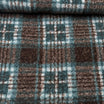
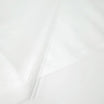

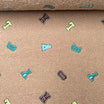
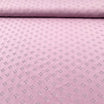






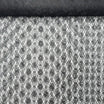



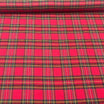


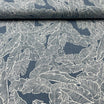


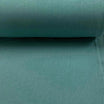

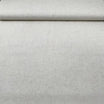

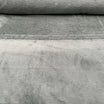
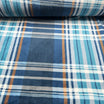
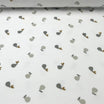
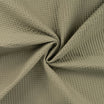








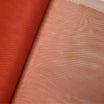
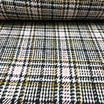
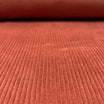
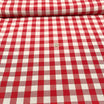


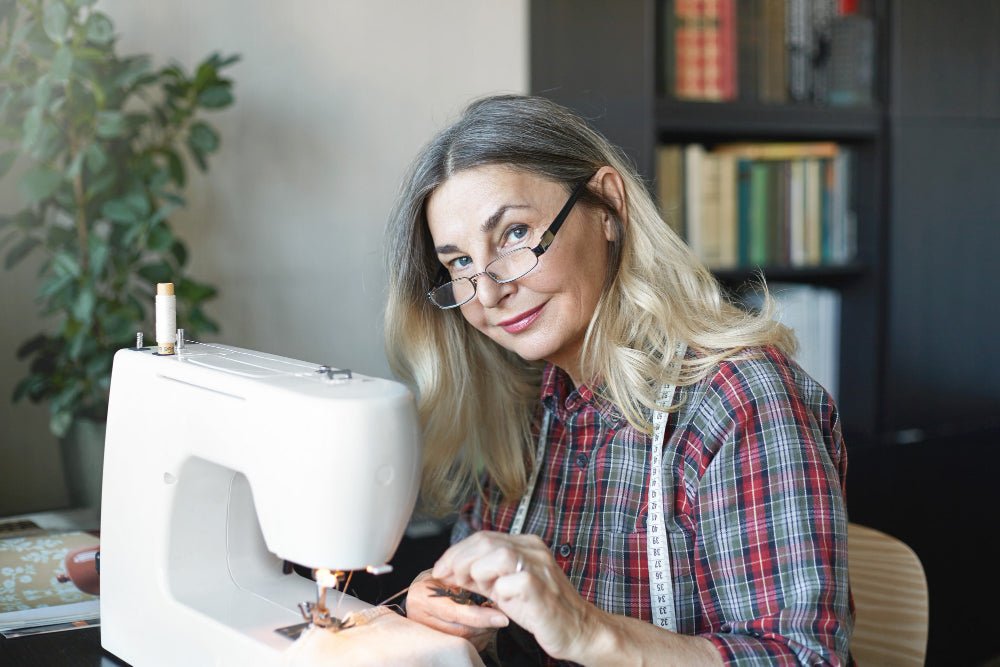


Leave a comment
All comments are moderated before being published.
This site is protected by hCaptcha and the hCaptcha Privacy Policy and Terms of Service apply.